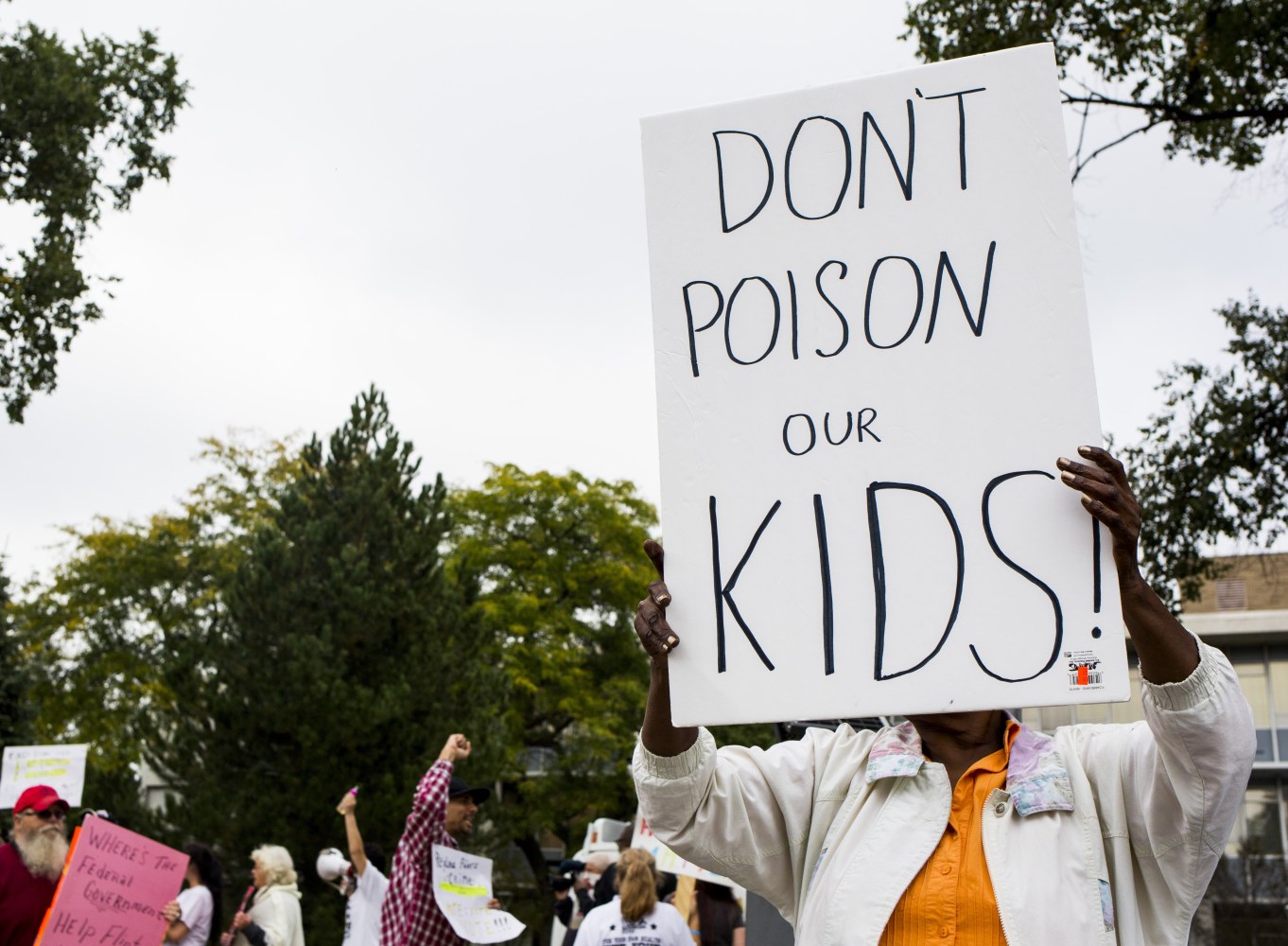Throughout my course, ENV212: U.S. Domestic Environmental Policy, I have been studying various United States policies centered around environmental issues. I have learned how to take a critical lens to some of these policies, one in particular is the Safe Drinking Water Act, especially in relation to the Flint water crisis:

What was once a thriving industrial city that housed the nation’s largest General Motors plant, the town of Flint, Michigan, is now home to one of the most recent environmental disasters in the United States. In a case of economic gain over public health, the city has been left with countless reports of increased lead levels in its drinking water.[1] The issue began in April 16, 2013, when the city decided to end its use of water from the city of Detroit and begin contracting with the Karegnondi Water Authority. Before the switch could be made, public officials decided to use water from the Flint River, a river with a history of being an industrial dumping ground since the time of Rust Belt prominence.[2]
After E. coli and total coliform bacteria were found in the river, chlorine was added to disinfect the water. The history of industrial waste in the river and the addition of chlorine made the water highly corrosive. When the Flint River water entered the pipes of Flint’s public water network, it caused the lead in the pipes to corrode and enter into the tap water of households across the city.[3] How did this happen? The answer lies within complicated stream of government misconduct across all levels, which may stem from the flawed nature of the Safe Drinking Water Act (SDWA). The piece of the SDWA that allows for states to apply for primacy, which says that they will adopt equal or higher standards than those set by the SDWA, allows for state neglect to occur. The room for negligence created by the flaws in the act are to blame for instances of environmental justice such as the Flint Water Crisis.
Originally passed by Congress in 1974, the purpose of the act and its amendments were to regulate the nation’s drinking water supply and its sources to protect public health. It also authorized the United States Environmental Protection Agency to set the standards for national health.[4] The provision of the act, however, that allows for the state and tribal national to apply for primacy, giving them control over the regulation of the drinking water, leaves room for error within the states. Primacy allows for a picking and choosing style of what a federal regulations a state wants to adhere to and leaves room for economics to outweigh public health.[5]

The case of the Flint water crisis is a perfect example of the issues of primacy. Susan Hedman, who was the head of EPA’s region 5 (which included Flint), issued a statement saying that the United States EPA “responded in the only way [they] could.” She reaffirmed that SDWA only allows the federal EPA to set the rules and regulations, but it is up to the states to implement them.[6] Michigan was given primacy under the SDWA and in doing so it was supposed to hold itself to equal, if not higher standards, than does the SDWA. The sampling errors conducted produced data that showed lead levels well below the SDWA lead limit. The data was flawed because, according to federal EPA rules, residences in the areas with the highest threat of poisoning should have been exclusively tested.[7] Lastly, the state and local government failed to conduct any type of corrosion control to prevent the lead from being released from the pipes after reporting that they had done so.[8] Because of the primacy amendment to the rule, the EPA was unable to act in a safe and appropriate way; therefore, bolstering the fact the primacy amendment weakens the Safe Drinking Water Act.
I recommend that Congress push for a new amendment to the SDWA that gives power back to the federal government to act in situations such as the one in Flint. By doing so, the federal government would ensure higher standards of protection for public health. It would also reduce the negligence of the state and local governments and ensure that they act accordingly with the standards set in place by the Safe Drinking Water Act.
[1] Dalmia, Shikha. “Poisonous stimulus: Flint water crisis.” Reason (May 2016): 6.
[2]Wisely, John & Robin Erb. “Chemical testing could have predicted Flint’s water crisis.” Detroit Free Press. http://www.freep.com/story/news/local/michigan/2015/10/10/missed-opportunities-flint-water-crisis/73688428/ (5 April 2017).
[3] Kennedy, Merrit. “Lead-Laced Water In Flint: A Step-By-Step Look At The Makings Of A Crisis.” National Public Radio. http://www.npr.org/sections/thetwo-way/2016/04/20/465545378/lead-laced-water-in-flint-a-step-by-step-look-at-the-makings-of-a-crisis (5 April 2017).
[4] “Understanding the Safe Drinking Water Act” U.S. EPA. https://www.epa.gov/sites/production/files/2015-04/documents/epa816f04030.pdf (27 March 2017).
[5] Puder, Markus G. “Tremors in the Cooperative Environmental Federalism Arena” Temple Journal of Science, Technology, & Environmental Law 24 (April 2005): 71-551.
[6] Clark, Charles S. “ ‘EPA responded in the Only Way We Could,” Says Official at Center of Flint Crisis.” Govexec.com (15 March 2016).
[7] Butler, Lindsey J, et al. “The Flint, Michigan, Water Crisis: A Case Study in Regulatory Failure and Environmental Injustice.” Environmental Justice 9 (2014): 93-7.
[8] Ibid.
